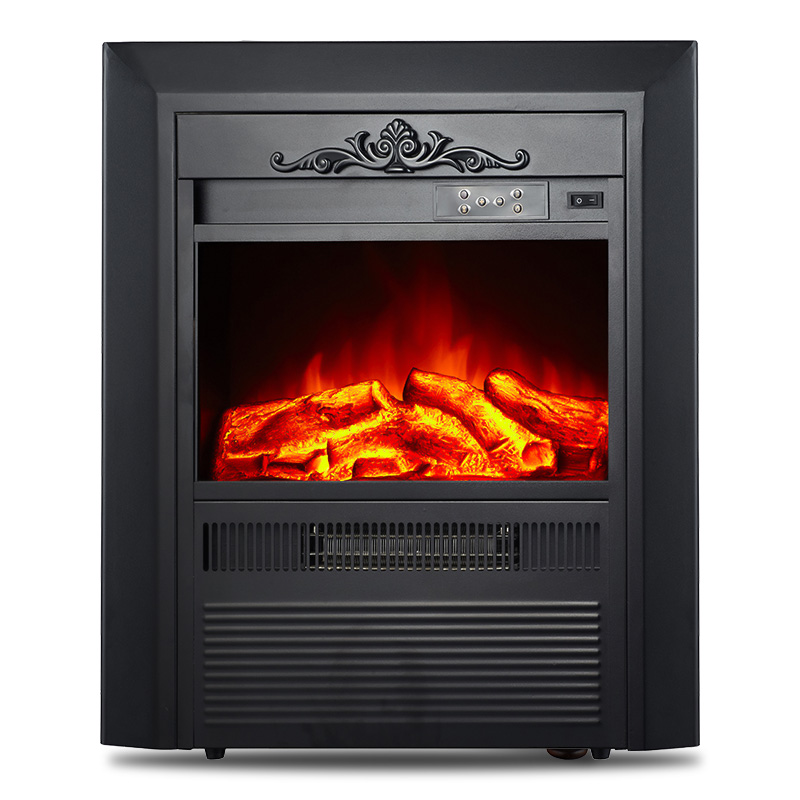Maintaining and cleaning your insert fireplace is crucial to ensure optimal performance and extend its lifespan. Here's a general guide, but be sure to consult your specific fireplace model's manual for manufacturer recommendations:
Regular Inspection: Implement a meticulous routine for visual inspections. This involves a detailed examination of every component of your insert fireplace. Scrutinize the firebox, flue, and chimney for any indications of wear, corrosion, or damage. Timely identification of such issues is critical to preventing their escalation into more severe problems, saving you both time and money in the long run.
Clear Combustion Area: For wood-burning insert fireplaces, don't just casually remove ashes—make it a systematic process. Regularly clear the combustion area, ensuring not only the removal of debris but also the optimization of airflow. Vigilance in keeping air vents unobstructed is paramount. This not only enhances combustion efficiency but also reduces the risk of blockages that could potentially compromise your fireplace's performance.
Clean the Glass: The visual appeal and functionality of your insert fireplace heavily depend on the cleanliness of its glass doors. Don't settle for a cursory wipe; instead, employ non-abrasive glass cleaners or a vinegar and water solution. The goal is not merely cleanliness but transparency. A spotless glass surface guarantees an unobstructed view of the flames, enhancing both the aesthetic and functional aspects of your fireplace.
Check and Clean the Flue: In wood-burning insert fireplaces, the accumulation of creosote in the flue is a real concern. Annual professional chimney sweeps aren't a suggestion; they're a necessity. This thorough cleaning not only removes creosote buildup but also serves as a comprehensive inspection of the entire flue, ensuring it remains free of obstructions or damage.
Clean the Chimney: If your insert fireplace is connected to a chimney, the annual professional chimney sweep isn't just a ritual—it's a vital safety measure. This expert cleaning rids the chimney of accumulated creosote and ensures proper ventilation. It's a proactive step in preventing chimney fires and maintaining the optimal functioning of your fireplace.
Verify Venting System: Gas insert fireplaces necessitate meticulous attention to the venting system. Regular inspections are a proactive measure to identify any potential obstructions or damage. Confirm that venting components are securely connected, and exhaust pathways are clear. This is not just about performance—it's about maintaining the safety and reliability of your gas fireplace.
Maintain the Ignition System: The ignition system of gas and electric insert fireplaces is a sophisticated mechanism that requires regular care. Don't merely clean—follow the manufacturer's guidelines meticulously. This involves the systematic cleaning or replacement of ignition components, ensuring not just functionality but the safety of your fireplace.
Monitor the Pilot Light: The pilot light in gas fireplaces is more than a mere indicator—it's a diagnostic tool. Regular monitoring is essential to ensure a steady burn. Any flickering or extinguishing warrants immediate attention. Refer to the manufacturer's instructions for troubleshooting and address pilot light irregularities promptly and comprehensively.
Keep the Surrounding Area Clean: Extend your cleaning regimen beyond the fireplace itself. Maintain a pristine and clutter-free environment around the fireplace, including the mantle and hearth. This isn't just about aesthetics—it's about safety. Dust and debris can pose fire hazards and impact the overall visual appeal of the fireplace. Regular cleaning ensures both safety and an inviting hearth area.
IF-1516 23-Inch Built-In Electric Fireplace






